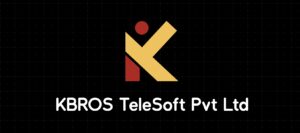Rosa Laptop Platform
Intel has upgraded its mobile Centrino platform with a faster bus, Draft-N Wi-Fi, and new Core 2 Duo processors.
New processors launching include the 2.4-GHz Core 2 Duo T7700 (the new top speed in Core 2 Duo mobile, up from 2.33 GHz), the 2.2-GHz Core 2 Duo T7500, the 2-GHz T7300, and the 1.8-GHz T7100.
All are made with the same 65-nanometer process as previous Core 2 Duos. The 2-GHz and faster CPUs offer 4MB of L2 cache (just as the earlier T7000 line of chips did), while the new 1.8-GHz model has 2MB of cache. The new CPUs have better processing capabilities, thanks to improvements to their microarchitecture such as a full four-wide superscalar pipeline, which enables the processor to handle four instructions per clock; macro fusion capabilities, which allow the processor to combine several commonly used instructions into a single instruction for more efficient execution; and Intel’s Advanced Smart Cache, which is optimized to reduce access times to frequently used data. The CPUs also have better power management, permitting them to turn off a portion of a core that’s not in use, say, or to turn off a core altogether while boosting the speed of the other core as needed, according to Shane Rau, IDC’s research program manager for PC semiconductors. Such abilities should prove helpful in the demanding Windows Vista environment.
The overall Santa Rosa platform brings several noteworthy updates to mobile computing, too. You get a faster 800-MHz frontside bus (up from 667 MHz), support for DDR2-800 memory, an upgrade of built-in wireless capability from 802.11a/b/g to the faster draft-n, gigabit ethernet, and a new chip-set family called Mobile 965 Express that will deliver significantly improved graphics via the Graphics Media Accelerator X3100 engine, according to Intel. Business laptops, which will use the Centrino Pro platform (consumer notebooks get the Centrino Duo platform), also get automated security features and IT management features built in.
Arguably the most innovative part of the platform is the optional Turbo Memory capability, formerly code-named Robson. Robson improves a system’s responsiveness and multitasking ability by including a nonvolatile flash memory cache to reduce hard-drive hits. That should help you load apps faster, get better resume times, and cut down on battery consumption
